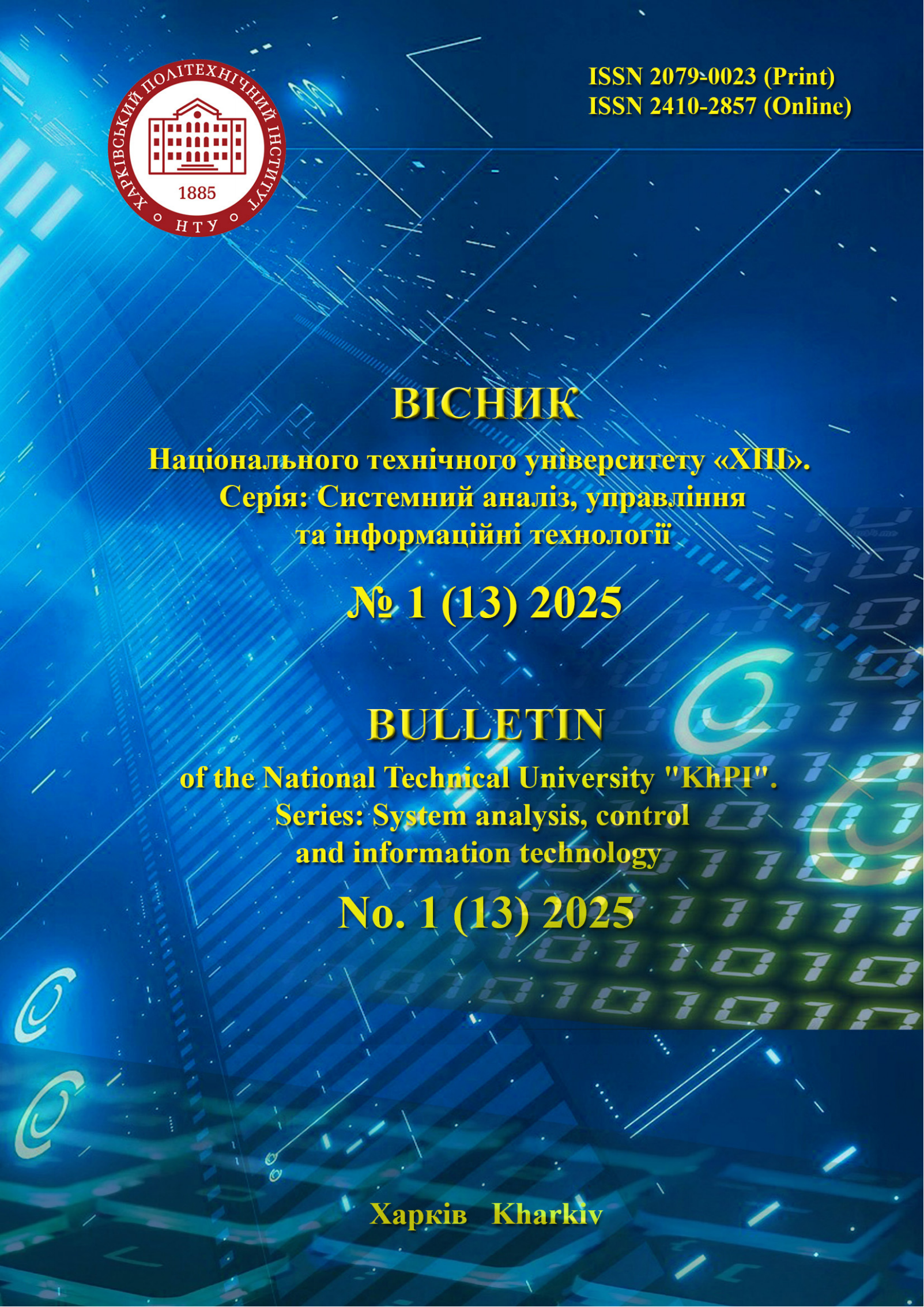ADAPTIVE DYNAMIC RESOURCE ALLOCATION IN SYSTEMS WITH MULTI-TENANCY ARCHITECTURE
DOI:
https://doi.org/10.20998/2079-0023.2025.01.07Keywords:
cloud computing, multi-tenant architecture, dynamic resource optimization, database, connection pool, adaptive resource allocation techniqueAbstract
The article considers the problem of efficient allocation of computing resources in cloud software systems based on the principle of multi-tenant architecture. This approach allows to simultaneously serve several users within a single software instance while ensuring the isolation of their data and configurations. This approach reduces infrastructure costs and simplifies maintenance, but sharing resources creates new challenges associated with uneven load and potential overload of individual system components. The study analyzes classical approaches to distributing database connections among users, both static, which fix the restrictions in advance, and basic dynamic, which consider only the current number of requests. The limitations of these methods under conditions of variable and uneven load are revealed. A new adaptive methodology for dynamic resource optimization is proposed, which considers not only the intensity of requests but also the average processing time, historical activity indicators, and individual characteristics of each user. The methodology also allows considering the weighting factor that determines the impact of each factor on the final calculation. Experimental verification of the model based on three scenarios with different request intensities showed a significant reduction in the average response time by up to 20 % compared to the baseline method, without increasing the total number of connections used. The results demonstrate the effectiveness of the proposed approach in real-world conditions. This methodology can be implemented in modern cloud platforms to improve performance, peak load resilience, and rational use of infrastructure resources.
References
Jaap Kabbedijk Defining Multi-Tenancy: A Systematic Mapping Study on the Academic and the Industrial Perspective. Available at: https://www.sciencedirect.com/science/article/abs/pii/S0164121214002313/ (accessed: 12.02.2025).
Hugo S. C. Pinto A Systematic Mapping Study on the Multi-tenant Architecture of SaaS Systems. Available at: https://www.research gate.net/publication/306255127_A_Systematic_Mapping_Study_on_the_Multi-tenant_Architecture_of_SaaS_Systems/ (accessed: 11.03.2025).
Rouven Krebs Architectural Concerns in Multi-Tenant SaaS Applications. Available at: https://www.researchgate.net/publication /264942141_Architectural_Concerns_in_Multi-tenant_SaaS_Appli cations/ (accessed: 18.12.2024).
Single vs. Multi Tenant Cost Comparison. Available at: https://www.slideshare.net/slideshow/single-vs-multi-tenant-cost-co mparison/35649260/ (accessed: 09.02.2025).
Optimizing Multi-Tenant SaaS Applications for Performance. Available at: https://divami.com/news/optimizing-multi-tenant-saas-applications-for-performance/ (accessed: 20.02.2025).
What is Multi-Tenant Data Management and Why do you need it? Available at: https://medium.com/%40shenli3514/what-is-multi-tenant-data -management-and-why-do-you-need-it-1-b424b81c0498/ (accessed: 12.03.2025).
Olivier Beaumont Comparison of Static and Dynamic Resource Allocation Strategies for Matrix Multiplication. Available at: https://inria.hal.science/hal-01163936/document/ (accessed: 09.03.2025).
Radu Prodan Comparison of Static and Dynamic Resource Allocations for Massively Multiplayer Online Games on Unreliable Resources. Available at: https://link.springer.com/chapter/10. 1007/978-3-319-14325-5_26/ (accessed: 12.03.2025).
Ragini Karwayun Static and Dynamic Resource Allocation Strategies in High Performance Heterogeneous Computing Application. Available at: https://www.ijarcs.info/index.php/Ijarcs/article/view/ 5265/ (accessed: 12.03.2025).
Cameron A. MacKenzie Static and Dynamic Resource Allocation Models for Recovery of Interdependent Systems: Application to the Deepwater Horizon Oil Spill. Available at: https://www.imse. iastate.edu/files/2016/01/MacKenzie-et-al-Static-and-Dynamic-Reso urce-Allocation-Models-for-Recovery-of-Interdependent-Systems-Accepted.pdf/ (accessed: 15.03.2025).
Multiplication Multi-Tenant Database Design: Single vs. Multiple DBs & The Role of a Master Database. Available at: https://smit90.medium.com/multi-tenant-database-design-single-vs-multiple-dbs-the-role-of-a-master-database-%EF%B8%8F-67bd679 2541b/ (accessed: 16.03.2025).
Jia-You Lin Dynamic Resource Allocation for Network Slicing with Multi-Tenants in 5G Two-Tier Networks. Available at: https://www. mdpi.com/1424-8220/23/10/4698/ (accessed: 16.03.2025).
Dominant Resource Fairness: Fair Allocation of Multiple Resource Types. Available at: https://www.usenix.org/conference/nsdi11/ dominant-resource-fairness-fair-allocation-multiple-resource-types/ (accessed: 21.03.2025).
Downloads
Published
How to Cite
Issue
Section
License

This work is licensed under a Creative Commons Attribution 4.0 International License.
Authors who publish with this journal agree to the following terms:
- Authors retain copyright and grant the journal right of first publication with the work simultaneously licensed under a Creative Commons Attribution License that allows others to share the work with an acknowledgement of the work's authorship and initial publication in this journal.
- Authors are able to enter into separate, additional contractual arrangements for the non-exclusive distribution of the journal's published version of the work (e.g., post it to an institutional repository or publish it in a book), with an acknowledgement of its initial publication in this journal.
- Authors are permitted and encouraged to post their work online (e.g., in institutional repositories or on their website) prior to and during the submission process, as it can lead to productive exchanges, as well as earlier and greater citation of published work (See The Effect of Open Access).


